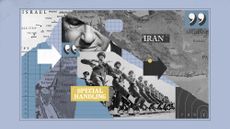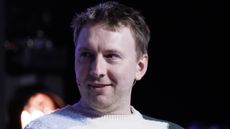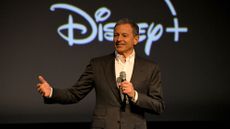Researchers may have solved the world's drug-resistant bacteria problem using artificial intelligence


Researchers at MIT reported Thursday that they have harnessed artificial intelligence to identify a completely new antibiotic compound that killed all but one of the antibacterial-resistant pathogens they tested it on. Drug-resistant bacteria are a large and growing problem, causing 2.8 million infections and 35,000 deaths in the U.S. each year and more in developing countries, STAT News reports. The computer learning model developed at MIT, described in the journal Cell, has the potential to identify many new types of antibiotics.
The researchers named the compound halicin, after HAL, the initially useful, eventually murderous sentient computer in 2001: A Space Odyssey. They also discovered eight more promising antibacterial compounds, two of which appear very powerful. They tried out halicin on mice and plan to work with a nonprofit or drugmaker to see if it's effective and safe in humans.
The MIT team's machine-learning model independently looked for certain properties — in this case, the ability to kill E. coli and not harm humans — among about 2,500 molecules in a drug repurposing database. Halicin was originally considered as a treatment for diabetes.
Subscribe to The Week
Escape your echo chamber. Get the facts behind the news, plus analysis from multiple perspectives.

Sign up for The Week's Free Newsletters
From our morning news briefing to a weekly Good News Newsletter, get the best of The Week delivered directly to your inbox.
From our morning news briefing to a weekly Good News Newsletter, get the best of The Week delivered directly to your inbox.
The model helps researchers find "leads among chemical structures that in the past we wouldn't have even hallucinated that those could be an antibiotic," Nigam Shah, a Stanford professor of biomedical informatics who wasn't involved in the study, told STAT News. "To use a crude analogy, it's like you show an AI all the different means of transportation, but you've not shown it an electric scooter," he added. "And then it independently looks at an electronic scooter and says, 'Yeah, this could be useful for transportation.'"
In this case, said MIT medical engineering professor James Collins, the platform "revealed this amazing molecule which is arguably one of the more powerful antibiotics that has been discovered." Collins is a senior author of the study along with MIT computer scientist Regina Barzilay. You can read more about their work at STAT News and MIT.
Sign up for Today's Best Articles in your inbox
A free daily email with the biggest news stories of the day – and the best features from TheWeek.com
Create an account with the same email registered to your subscription to unlock access.
Peter has worked as a news and culture writer and editor at The Week since the site's launch in 2008. He covers politics, world affairs, religion and cultural currents. His journalism career began as a copy editor at a financial newswire and has included editorial positions at The New York Times Magazine, Facts on File, and Oregon State University.
-
 How (and why) to have the inheritance talk with family sooner than later
How (and why) to have the inheritance talk with family sooner than laterThe Explainer The hard conversations aren't going to get any easier if you wait
By Becca Stanek, The Week US Published
-
 Is there a peaceful way forward for Israel and Iran?
Is there a peaceful way forward for Israel and Iran?Today's Big Question Tehran has initially sought to downplay the latest Israeli missile strike on its territory
By Sorcha Bradley, The Week UK Published
-
 The Week Unwrapped: Sudan, tackling homelessness and fake news
The Week Unwrapped: Sudan, tackling homelessness and fake newsPodcast What is happening in Sudan? Could London really end rough sleeping? And why has Joe Lycett been making up stories?
By The Week Staff Published
-
 Empty-nest boomers aren't selling their big homes
Empty-nest boomers aren't selling their big homesSpeed Read Most Americans 60 and older do not intend to move, according to a recent survey
By Peter Weber, The Week US Published
-
 Brazil accuses Musk of 'disinformation campaign'
Brazil accuses Musk of 'disinformation campaign'Speed Read A Brazilian Supreme Court judge has opened an inquiry into Elon Musk and X
By Rafi Schwartz, The Week US Published
-
 Disney board fends off Peltz infiltration bid
Disney board fends off Peltz infiltration bidSpeed Read Disney CEO Bob Iger has defeated activist investor Nelson Peltz in a contentious proxy battle
By Rafi Schwartz, The Week US Published
-
 Disney and DeSantis reach detente
Disney and DeSantis reach detenteSpeed Read The Florida governor and Disney settle a yearslong litigation over control of the tourism district
By Peter Weber, The Week US Published
-
 Visa and Mastercard agree to lower swipe fees
Visa and Mastercard agree to lower swipe feesSpeed Read The companies will cap the fees they charge businesses when customers use their credit cards
By Peter Weber, The Week US Published
-
 Reddit IPO values social media site at $6.4 billion
Reddit IPO values social media site at $6.4 billionSpeed Read The company makes its public debut on the New York Stock Exchange
By Peter Weber, The Week US Published
-
 Housing costs: the root of US economic malaise?
Housing costs: the root of US economic malaise?speed read Many voters are troubled by the housing affordability crisis
By Peter Weber, The Week US Published
-
 Feds cap credit card late fees at $8
Feds cap credit card late fees at $8speed read The Consumer Financial Protection Bureau finalized a rule to save households an estimated $10 billion a year
By Peter Weber, The Week US Published